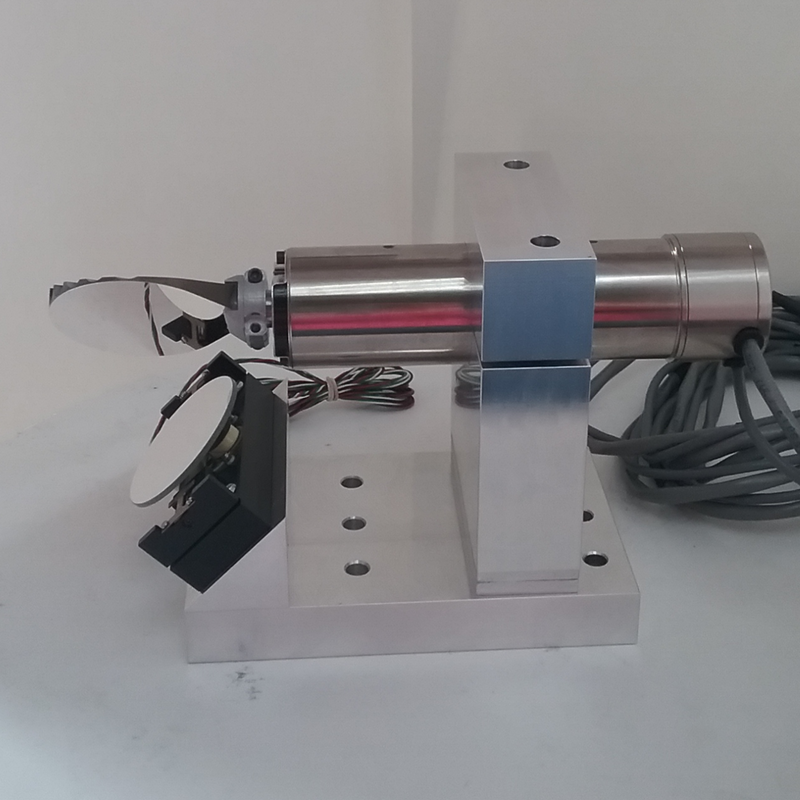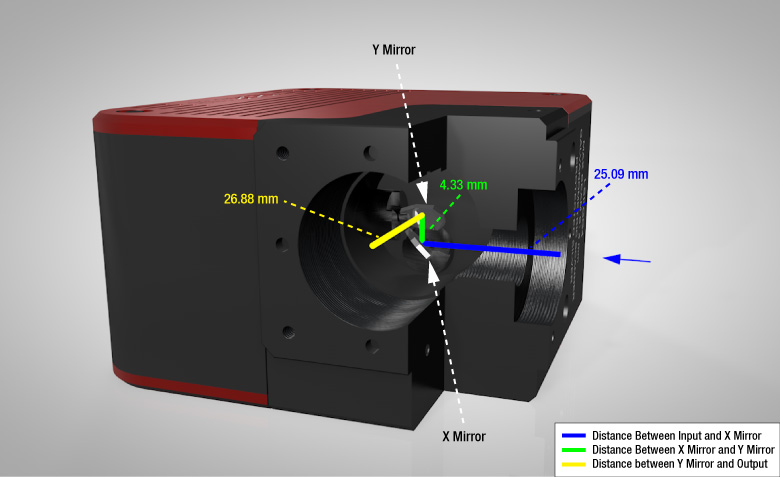Recognizing the Innovation Behind the Galvanometer Scanner for Accurate Readings
Wiki Article
Just How a Galvanometer Scanner Improves Performance in Laser Scanning Technologies
The combination of galvanometer scanners in laser scanning technologies represents a pivotal advancement in precision engineering. By facilitating fast and exact modifications of laser light beam direction, these tools dramatically boost functional efficiency across various applications, from clinical imaging to industrial engraving.Recognizing Galvanometer Scanners
A galvanometer scanner is an advanced tool that leverages electro-magnetic principles to accomplish specific angular movement of mirrors or other reflective surfaces. These scanners operate via the communication of an electric existing and an electromagnetic field, making it possible for fast and accurate positioning. This technology is essential in applications calling for high-speed scanning, such as laser engraving, optical interaction, and medical imaging.
Galvanometer scanners are usually characterized by their rapid reaction times and high angular resolution, making them optimal for applications that demand rapid activities and exact placing. Their integrity and performance make them an important component in contemporary laser scanning modern technologies, adding dramatically to advancements in different areas, including production, medical care, and telecommunications.
Device of Laser Light Beam Control

The control system counts on closed-loop comments systems that continually check the beam of light's position. The signals from optical sensors provide real-time data to the control system, enabling fast modifications to preserve accuracy. This is crucial in applications where also mild inconsistencies can compromise the top quality of the check or etching.
Additionally, the galvanometer's response time is vital; high-speed electric motors make it possible for speedy movements, ensuring that the laser beam of light can swiftly trace complicated patterns or carry out complex operations. The integration of electronic signal processing further improves the responsiveness and accuracy of the galvanometer scanner. Overall, the device of laser beam control through galvanometer scanners exhibits the blend of innovative design and technology, yielding high-performance results in laser scanning applications.
Benefits of Improved Precision
Improved accuracy in laser scanning innovations offers substantial benefits across numerous applications, from commercial production to clinical procedures. The assimilation of galvanometer scanners permits very exact light beam positioning, which is important for jobs calling for careful information. This enhanced accuracy guarantees that the laser can target particular areas with very little inconsistency, causing exceptional quality outcomes.
In industrial contexts, precise laser scanning leads to improved item uniformity and minimized product waste. In medical applications, the accuracy of laser procedures can significantly impact patient results.
Furthermore, improved accuracy assists in innovative applications such as 3D imaging and microfabrication, where also minute errors can cause considerable mistakes. By providing repeatable and reliable laser positioning, galvanometer scanners contribute to the total effectiveness and efficiency of laser systems. In recap, the advantages of boosted accuracy not only boost operational efficiency but additionally boost the standards of top quality and safety in various fields.
Applications in Various Industries
The adaptability of galvanometer scanners in laser scanning technologies expands across numerous markets, each taking advantage of the accuracy they provide. In the clinical field, these scanners are crucial in applications such as laser surgical procedure and imaging, permitting highly exact targeting of tissues while minimizing damage to surrounding areas - galvanometer scanner. Their fast reaction and great resolution are critical in producing top notch resultsIn the manufacturing field, galvanometer scanners boost processes like laser inscription and cutting. Their capacity to swiftly guide laser beam of lights onto surface areas enables efficient production lines, improving speed and accuracy in developing elaborate designs or parts.
The automobile market additionally takes advantage of on galvanometer modern technology for quality assurance and assessments (galvanometer scanner). By utilizing high-speed scanning, makers can find problems in products or assemblies, ensuring that items satisfy stringent requirements
In addition, in the amusement industry, galvanometer scanners are employed in laser light programs and displays, supplying vibrant visual experiences with specific control over laser activities.
web link
Future Fads in Laser Scanning
Emerging modern technologies are positioned to revolutionize the landscape of laser scanning, with galvanometer scanners at the center of this change. As markets increasingly demand accuracy and performance, the evolution of galvanometer innovation will drive considerable advancements in laser scanning applications.Future fads suggest a growing assimilation of man-made intelligence and artificial intelligence algorithms, which will enhance information processing abilities and automate decision-making in real-time. This harmony will certainly enable extra advanced evaluation of checked information, bring about boosted precision in applications such as 3D modeling and self-governing navigation.
In addition, the miniaturization of parts and the development of advanced products will add to lighter, more mobile laser scanning systems. This mobility will broaden the reach of laser scanning modern technologies into previously hard to reach atmospheres, such as remote surface and complex building rooms.
The rise of augmented fact (AR) and online truth (VIRTUAL REALITY) applications will likewise form the future of laser scanning. By incorporating galvanometer scanners with AR and virtual reality, users will take advantage of immersive experiences that improve visualization and project preparation.
Conclusion
To conclude, galvanometer scanners play a critical role in enhancing laser scanning innovations with their precise control of beam of light direction and quick angular modifications. The assimilation of sophisticated feedback systems and optical sensors significantly boosts functional speed and accuracy, resulting in improved outcomes in applications such as laser inscription and clinical imaging. As sectors progressively take on these technologies, the recurring developments in galvanometer scanner layouts are anticipated to more elevate efficiency standards and expand application possibilities.The combination of galvanometer scanners in laser scanning technologies represents a pivotal innovation in accuracy design. Overall, the device of laser light beam control via galvanometer scanners exemplifies the blend of sophisticated engineering and modern technology, generating high-performance outcomes in laser scanning applications.
By offering reliable and repeatable laser positioning, galvanometer scanners add to the overall efficiency and efficiency of laser systems.The adaptability anchor of galvanometer scanners in laser moved here scanning technologies extends across multiple markets, each profiting from the precision they give.In final thought, galvanometer scanners play a pivotal role in maximizing laser scanning technologies through their specific control of beam instructions and fast angular adjustments.
Report this wiki page